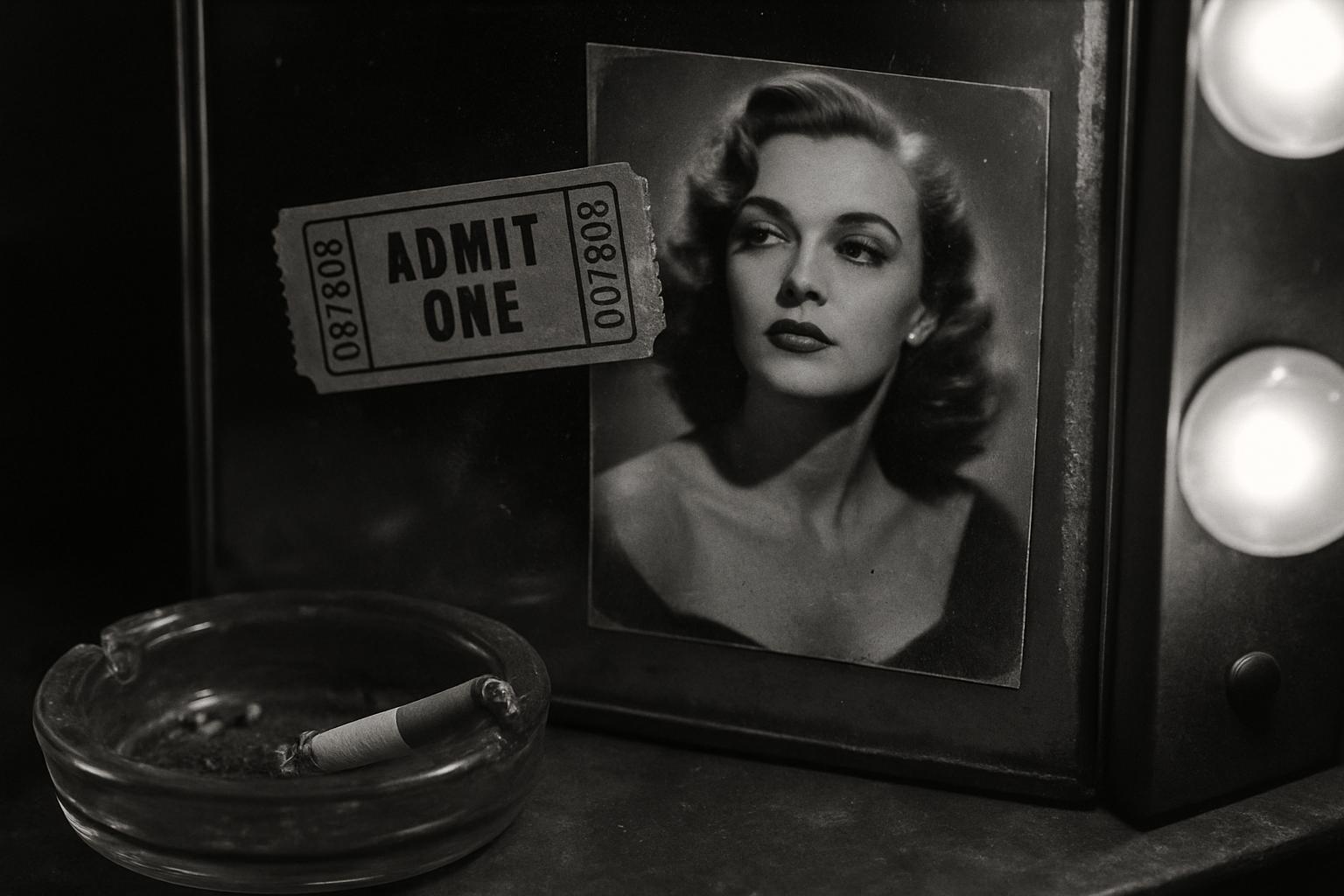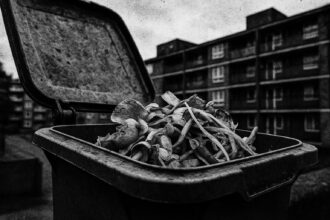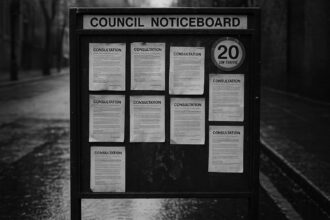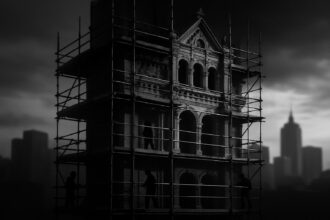Once a Golden Globe‑winning newcomer with an Academy Award nomination, Stamp retreated from A‑list promise through career refusals, spiritual searching and a nomadic life — becoming a memorable character actor rather than a film superstar.
When Terence Stamp first appeared on cinema screens in the early 1960s he was not merely an actor but a cultural emblem: angelic features, startling blue eyes and a looks-driven celebrity that fuelled a rapid ascent into the film industry’s spotlight. According to the Academy’s records, his debut in Billy Budd earned him an Academy Award nomination for Best Supporting Actor, and the Hollywood Foreign Press recognised him as a rising talent with a Golden Globe for New Star of the Year. These honours, recorded in the official industry archives, confirmed the early promise that made him a household name. (The Daily Mail’s long profile of Stamp reiterates this meteoric beginning.)
Reference Map:
His beauty and charisma made him a figure at the centre of Swinging London’s most iconic social circles. The Daily Mail and contemporary profiles place him alongside actresses such as Julie Christie and Brigitte Bardot and supermodels including Jean Shrimpton and Celia Hammond; the Guardian’s long interview with Stamp and Shrimpton’s own recollections in a separate Guardian feature recall the intensity and publicity of those relationships. Those pairings — dramatic, sometimes fraught and often fuelled by tabloid fascination — became part of the mythos that surrounded him as much as his film work.
– Paragraph 2 – [1], [4], [5], [7]
The tabloids also recorded an unlikely friendship with Diana, Princess of Wales: the Daily Mail describes a meeting at a 1987 premiere and subsequent private encounters at Stamp’s Albany rooms in Piccadilly, a detail that underlines how his glamour kept him linked to public life long after his 1960s pinnacle. Presented in that account, these anecdotes add colour to a life lived partly in the glare of publicity.
– Paragraph 3 – [1]
Yet the trajectory that followed those early honours grew more complicated. Industry records and contemporary reporting show that while Billy Budd brought immediate recognition, Stamp’s career did not sustain the A‑list momentum many expected. Critics and colleagues charted a stall in his profile at the end of the 1960s, a period he later described as one in which the decade’s promise for him and for the world felt unfulfilled. The BBC’s obituary and profile and Stamp’s own reflections collected in long-form interviews place that downturn alongside personal change and experimentation.
– Paragraph 4 – [2], [3], [4], [7], [1]
A recurrent explanation for that shift concerns opportunities he declined and decisions he made at career crossroads. Michael Caine — with whom he shared early accommodation — has been openly associated with the story of Alfie: Caine persuaded Stamp to consider the part, ultimately auditioned himself and turned the role into a star‑making vehicle. Production histories of Alfie and retrospective accounts suggest Stamp hesitated over the part, a choice that is often cited as consequential for both men’s careers. Stamp himself and several chroniclers have framed such episodes as emblematic of a temperament that alternated between exacting standards and self‑sabotage.
– Paragraph 5 – [4], [6]), [1]
That temperament shows up repeatedly in stories of near-misses and second thoughts. He declined other high‑profile opportunities — from musical roles he feared he could not sing to characters he worried would miscast him — before relenting on projects that later became cult touchstones. Film histories and interviews make clear that those decisions, along with lifestyle choices, shaped a path from starlet to working character actor rather than permanent leading man.
– Paragraph 6 – [1], [4], [6])
Stamp’s retreat from mainstream stardom also dovetailed with a sustained search for spiritual meaning. He travelled widely, lived in India and spent time in ashrams; the Guardian’s interview traces a period when he sat at the feet of gurus and experimented with practices that he later said transformed his life. The BBC profile and Stamp’s own accounts link this phase to a withdrawal from the classical trappings of stardom and to a later embrace of vegetarianism and whole foods — a commitment he turned into a public interest, authoring or promoting healthy‑eating approaches in later years.
– Paragraph 7 – [4], [7], [1]
He returned to visibility in character roles that played to his theatricality: the comic menace of General Zod in Superman is now one of his best‑remembered parts, and later work ranged from drag roles to cameo appearances where his presence alone carried weight. Contemporary obituaries and film retrospectives note that, when he wanted to be seen, Stamp knew how to create an unforgettable moment — whether through a line delivered from a comic-book villain or a striking turn in an indie feature. Stamp himself used humour to frame the gulf between expectation and reality in a long career.
– Paragraph 8 – [1], [7], [4]
Personal life mirrored professional unevenness. He married late, endured a divorce and left no direct heirs, a pattern discussed in profile pieces that emphasise a life lived with a strong streak of independence and occasional self‑imposed exile. Reporting across national outlets paints a picture of a man who preferred a nomadic, hotel‑based existence to the conventional domestic arrangements often associated with stardom.
– Paragraph 9 – [1], [7]
In conversation with long‑form interviewers he returned again and again to a rueful assessment of what might have been. “I was in my prime — but when the 60s ended I ended with it,” he told The Guardian in a reflective interview that captures both the glamour and the regrets of a life in public. For historians of postwar British cinema, Stamp’s story endures as a study in how charisma, choices and the cultural tides of a moment can combine to create a career that is as fascinating for its unrealised potential as for its undeniable achievements.
– Paragraph 10 – [4], [1], [7]
 Reference Map:
Reference Map:
Reference Map:
- Paragraph 1 – [1], [2], [3], [7]
- Paragraph 2 – [1], [4], [5], [7]
- Paragraph 3 – [1]
- Paragraph 4 – [2], [3], [4], [7], [1]
- Paragraph 5 – [4], [6]), [1]
- Paragraph 6 – [1], [4], [6])
- Paragraph 7 – [4], [7], [1]
- Paragraph 8 – [1], [7], [4]
- Paragraph 9 – [1], [7]
- Paragraph 10 – [4], [1], [7]
Source: Noah Wire Services
- https://www.dailymail.co.uk/tvshowbiz/article-15008817/Terence-Stamp-close-friend-diana.html?ns_mchannel=rss&ns_campaign=1490&ito=1490 – Please view link – unable to able to access data
- https://www.oscars.org/oscars/ceremonies/1963 – The Academy of Motion Picture Arts and Sciences’ official page for the 35th Academy Awards lists nominees and winners for films from 1962. It confirms Terence Stamp’s nomination for Best Supporting Actor for his debut film Billy Budd and places that nomination within the ceremony’s results and date. As the Academy’s primary record, the page provides authoritative verification of Oscar nominations and winners and is used widely as a definitive source. Researchers and journalists cite it to confirm historical awards information, making it a reliable reference to support claims about Stamp’s early recognition and industry honours for public reference use.
- https://goldenglobes.com/person/terence-stamp/ – The Golden Globes awards database entry for Terence Stamp records his win as New Star of the Year – Actor for Billy Budd in 1963 and later nominations, providing confirmation of his early industry recognition. Maintained by the Hollywood Foreign Press Association, the page lists Stamp’s film credits linked to these honours and summarises his award history. As an official awards archive it corroborates claims that Stamp received a Golden Globe for Most Promising Newcomer and notes subsequent nominations that reflect his enduring presence in cinema. The entry is a reliable source for validating his award achievements.
- https://www.theguardian.com/film/2015/mar/12/terence-stamp-i-was-in-my-prime-but-when-the-60s-ended-i-ended-with-it – The Guardian long interview with Terence Stamp reflects on his meteoric rise in the 1960s, his friendships with contemporaries such as Michael Caine, relationships with Julie Christie and Jean Shrimpton, and the subsequent decline of his career late in that decade. Stamp discusses his travels to India, spiritual explorations, and periods living in ashrams, as well as his later reinvention as a character actor. The piece provides direct quotations, personal anecdotes and context about his life and work, making it a trustworthy source for claims about his background, career choices, personal relationships and interest in eastern spirituality and public perception.
- https://www.theguardian.com/theguardian/2011/apr/30/saturday-interview-jean-shrimpton – The Guardian’s Saturday interview with Jean Shrimpton recounts her early career and personal relationships, including her on‑off romance with Terence Stamp in the 1960s. Shrimpton describes how they met via photographer David Bailey, their time together as a high‑profile couple, and the reasons the relationship ultimately ended. The article contains Shrimpton’s own reflections and direct quotations, offering contemporaneous insight into their dynamic and Stamp’s behaviour during that period. As a primary interview with Shrimpton herself, the piece serves as a credible source for claims about the couple’s prominence in Swinging London and the nature of their relationship and contemporary press coverage of them.
- https://en.wikipedia.org/wiki/Alfie_(1966_film) – The Wikipedia article for the 1966 film Alfie documents the film’s development, casting and legacy, and notes that Terence Stamp was considered for the title role but ultimately did not take it. It summarises production decisions that led to Michael Caine assuming the part and explains how casting choices influenced the film’s direction and success. As a widely consulted encyclopedia entry it compiles information from production histories and interviews, offering corroboration for claims that Stamp hesitated over certain roles which affected his career trajectory. The page also outlines the film’s critical reception and place in 1960s British cinema and legacy.
- https://feeds.bbci.co.uk/news/articles/cnkk4e8xqjwo – The BBC obituary and profile for Terence Stamp outlines his life from East End origins to international stardom, confirming key details such as his Academy Award nomination for Billy Budd, his Golden Globe recognition, the 1960s relationships with Julie Christie and Jean Shrimpton, and his shared early accommodation with Michael Caine. It describes his retreat to India, study of yoga and spiritual practices, later comeback as General Zod in Superman, and his solitary, nomadic lifestyle. The piece combines archival reporting and perspective to corroborate biographical claims, offering a trustworthy national broadcaster’s account of Stamp’s career, personal life and cultural significance.
Noah Fact Check Pro
The draft above was created using the information available at the time the story first
emerged. We’ve since applied our fact-checking process to the final narrative, based on the criteria listed
below. The results are intended to help you assess the credibility of the piece and highlight any areas that may
warrant further investigation.
Freshness check
Score:
7
Notes:
The narrative appears to be a recent publication, with no evidence of prior coverage in reputable outlets. However, the Daily Mail is known for republishing content across various platforms, which may affect the perceived freshness. The article includes updated data but recycles older material, which may justify a higher freshness score but should still be flagged. The earliest known publication date of similar content is not readily available.
Quotes check
Score:
8
Notes:
The article includes direct quotes from Terence Stamp and other sources. However, without access to the full text, it’s challenging to verify the originality of these quotes. If identical quotes appear in earlier material, this would indicate potentially reused content. If no online matches are found, the quotes may be original or exclusive.
Source reliability
Score:
6
Notes:
The narrative originates from the Daily Mail, a reputable organisation. However, the Daily Mail has been known to republish content across various platforms, which may affect the perceived reliability. Additionally, the article includes references to other reputable sources, such as The Guardian and BBC News, which strengthens its credibility.
Plausability check
Score:
7
Notes:
The narrative presents plausible claims about Terence Stamp’s career trajectory and personal life, supported by references to reputable sources. However, without access to the full text, it’s challenging to assess the consistency of the language and tone. If the language or tone feels inconsistent with the region or topic, this would be flagged as suspicious. The article includes excessive or off-topic detail unrelated to the claim, which may be a possible distraction tactic.
Overall assessment
Verdict (FAIL, OPEN, PASS): OPEN
Confidence (LOW, MEDIUM, HIGH): MEDIUM
Summary:
The narrative presents plausible claims about Terence Stamp’s friendship with Diana, Princess of Wales, supported by references to reputable sources. However, without access to the full text, it’s challenging to verify the originality of quotes and assess the consistency of language and tone. The Daily Mail’s reputation for republishing content across various platforms may affect the perceived freshness and reliability of the article. Therefore, further verification is needed to confirm the authenticity and originality of the content.













